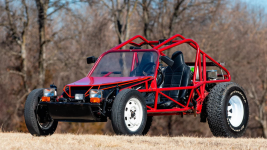Mike Bounds
10 µW
Most velomobiles are under 60kg, and a few are classed as mopeds, such as the Northern Light 630, which although capable of 50mph, can only legally do 28mpg. To get any vehicle legally capable of 50mph, the next weight bracket seems to be over 250kg where I can only find one which is still a velomobile which is the Twike3 which is only loosely a velomobile as by its own definition the pedal assists the motor, rather than motor assisting the pedal power, so compared to the Northern Light 630 where 200W is enough to sustain 30mph without any electric assistance, for the Twike3 power, 200W only provides 20% of what is required.
There are lot of regulations to make a 15mph velomobile Ebike legally capable of 28mph, but there seems to be very little additional regulation to make it legally capable of speeds up to 70mph - the main thing being the design and construction which covers the chassis, sub-frame, body parts, wheels, axles and suspension to assess the ability to withstand the forces and vibrations imposed during acceleration, braking and cornering when fully laden. Do the extra stresses on a velomobile of increasing the speed from 28mph to 50+mph mean lightweight cycle components cannot be used and must be replaced by much heavier motorbike/car components? So for example would it be possible to alter the Northern Light 630 or the Begorett Angelina (which also has a moped/Super Pedelec version) to be more sturdy, to make it legally a motor trike/quad bike somewhere around 100kg, or does it require a major redesign to be safe at higher speeds?
There are lot of regulations to make a 15mph velomobile Ebike legally capable of 28mph, but there seems to be very little additional regulation to make it legally capable of speeds up to 70mph - the main thing being the design and construction which covers the chassis, sub-frame, body parts, wheels, axles and suspension to assess the ability to withstand the forces and vibrations imposed during acceleration, braking and cornering when fully laden. Do the extra stresses on a velomobile of increasing the speed from 28mph to 50+mph mean lightweight cycle components cannot be used and must be replaced by much heavier motorbike/car components? So for example would it be possible to alter the Northern Light 630 or the Begorett Angelina (which also has a moped/Super Pedelec version) to be more sturdy, to make it legally a motor trike/quad bike somewhere around 100kg, or does it require a major redesign to be safe at higher speeds?









